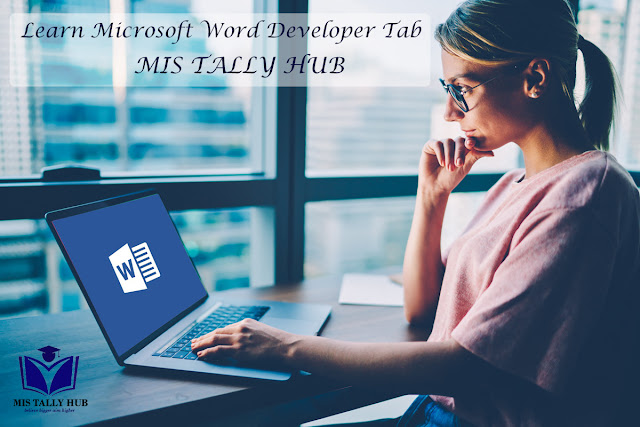Guidance of Workbook | Basic to Advance | MIS TALLY HUB

A workbook is the name given to an Excel document and has the file extension (".xlsx"). A workbook comprises one or more worksheets and there are 3 worksheets in the default workbook. There are tabs at the bottom of the workbook to enable you to select which worksheet is presently displayed. Using multiple worksheets within a workbook permits you to systematize your data better. The default naming convention for workbooks is Book1, Book2, etc.
You can open as many workbooks as you like but there can only ever be one
Active Workbook at any one time.

|
|
Using the Control
Buttons
The icon in
the top left hand corner is called as the control menu and the three buttons in
the top right hand corner provide shortcuts for commands on this menu.
You can also see the control menu by pressing the left mouse button on the icon
in the top left corner.
The outdoor
window is the Title Bar or Application Window.
This window shows the name of the application and the name of the active
workbook.

|
|
Minimise: - Microsoft Excel is reduced to a button on the taskbar.
Restore: - Restores the application window to
its original size before it was maximised or minimised.
Or Maximise: - Increases the size of the Excel
window to fill the whole screen.
Close: - Closes Excel completely.

|
|
Minimise: - Workbook is reduced to a small icon
within Excel.
Restore: - Restores the workbook window to its original size before it was
maximised or minimised.
Or Maximise: - Workbook is increased to seal the entire application window. When the
window is maximised this button changes to restore.
Close: - Closes the active workbook.
Options
General tab, Default file location: – It Lets you change the directory that
the (File > Open) and (File > Save As) dialog boxes default to.
General tab, recently used files list: - It Lets you change the number of
workbooks showed at the bottom of the File menu.
General tab, Sheets in new workbook: - It lets you change the default number of worksheets
in a new workbook.
General tab, User Name: - It lets you enter your username. This
will automatically appear in the (File > Properties) (Summary tab) when you
create a new workbook. It permits you to keep track of who creates the
workbooks.
Transition tab, Save Excel files as: - It Lets you change the type of file
that the (File > Save As) dialog box defaults to.
View tab, Windows in task bar: - Shows all your workbooks and windows
as separate items on the task bar.
Tab Split Bar
Drag the split bar to the right if you want to see more sheet tabs and
less horizontal scroll bar. Double click the tab split to return it to its
normal position. Right click on tab scrolling buttons to get a list of all the
worksheets for quick selection
Important
If you have few workbooks open and you want to close them all quickly,
hold down Shift and select (File > Close All). You will be
prompted if there is any unsaved data.
You can see your workbooks on the full screen by pressing (View >
Full Screen). This will maximise the amount of information that is seen by eliminating
all the toolbars excepting the menu bar. It will maximise Excel on your PC
though.
If you re-name any workbook files using Windows Explorer do not forget to keep
the (".xls") file extension. This extension recognizes the file as
being an Excel workbook. The (Edit > Undo) command is workbook (not
worksheet) specific and can be used to undo the last 16 actions.
You can also use the shortcut key (Shift + F12) to save a
workbook.
You can also use the shortcut key (Ctrl + F12) to display the
(File > Open) dialog box.
How many worksheets can
I use?
Using lots of smaller worksheets as opposite to one large worksheet has
several advantages: -
1) Your worksheets will recalculate faster.
2) Your data will be easier to manage and to update.
There is no restriction on the number of worksheets you can have in a workbook,
as long as you have enough memory on your PC.
Remove the Blank
Workbook
You can prevent the default (empty) workbook from opening every time you
open Excel by adding a switch to your Excel shortcut. Right mouse click on the
shortcut you are using to open Excel. Select Properties and append the
following "/e" to the end of the target line.
Default Number of
Worksheets
By default, every new workbook contains 3
worksheets. This can be changed by selecting (Tools > Options) (General tab,
Sheets in new workbook). When this setting is changed the new value is stored
in the registry at the following location: -
HKEY_CURRENT_USER\Software\Microsoft\Office\11.0\Excel\Options\DefSheets
Tools > Options
All the following options are workbook specific and changes will be
applied to all the worksheet in the workbook.
View tab, Horizontal scroll bar: - Shows the horizontal scroll bar in
your worksheets.
View tab, Vertical scroll bar: - Shows the vertical scroll bar in your
worksheets.
View tab, Sheet tabs: - Shows sheet tabs at the bottom of a
workbook so that you can manoeuvre and select multiple worksheets easily.
Different Layers
Although an Excel workbook may appear to be a single entity there are in
fact three layers: -
Data layer: - This holds the worksheet data, numbers, text, formulas etc
Back drawing layer: - This holds background images such as background images gridlines etc.
Front Drawing layer: - This comprises graphics to highlight important pieces of information,
charts, comments etc. This obviously hides any items in the drawing layer or
data layer behind.
Excel Viewer
The Excel Viewer is free to distribute and allows you to open and print
Excel workbooks. You can also copy data from Excel Viewer to another
application.
File
Already Open
When you try to open a file that resides on a
shared network drive while another user has the file open Microsoft Excel will show
the File in Use dialog box. This dialog box gives you the option of opening the
file as Read only and also to be automatically notified when the file is
available for editing.
If the file was saved with a read-only password
then you must still enter the appropriate password to open the file. If you
click Notify Excel will open the file in read-only mode but will notify you
when the file becomes available for read-write access. At that point the File
Now Available dialog box will appear.
Accessing and Saving
Remote Files
Using the Save In drop-down list on the Save As dialog box you can save
a workbook on any available network drive or at an FTP site or web folder on
the internet. The dialog box that is showed when you choose (File > Open)
contains a Look In drop-down list alike to the Save In list.
Custom Workbook
Properties
Do they have to be named ranges ?
If the cell is deleted then the custom property is automatically removed ??
The username that appears in the (File > Properties)(Summary tab) is
from the (Tools > Options)(General tab, "User Name") of the user
who created the workbook.
It is possible to create and save custom properties within your workbooks (File
> Properties). This will also tell you when a workbook was created.
Excel 2000 and later has a "Detect and Repair" option on the Help
menu that will replace any missing or damaged files that Excel needs in order
to operate properly. You may require the installation CD.
Removing the "Ask
a Question" box


Comments
Post a Comment